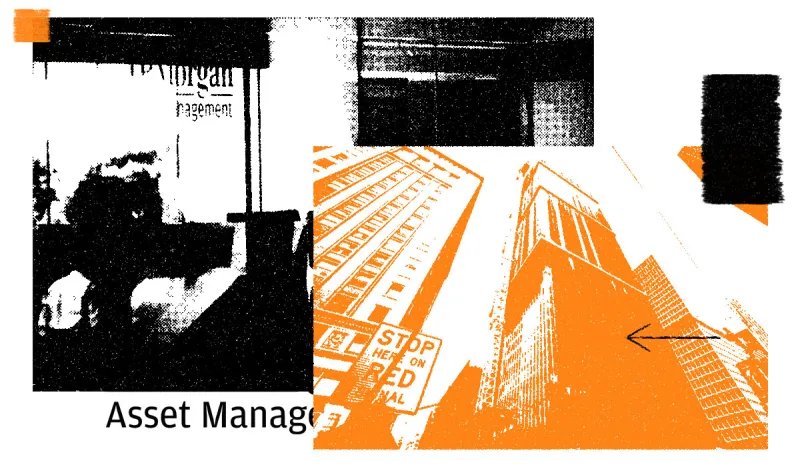When Paul Bateman, chairman of the board of J.P. Morgan Asset Management, and George Gatch, CEO and a 33-year veteran of the bank, told thousands of employees in 2018 that a crisis was coming and it was time to prepare, it seemed like unwarranted negativity.
While stocks seemed frothy after a long bull market, there weren’t any signs it would end anytime soon. But Gatch and Bateman, the former chairman of Robert Fleming Asset Management, which JPMorgan acquired in its 2000 merger with Chase Manhattan, knew a crisis wouldn’t announce itself ahead of time.
The two industry veterans had been through plenty of crises before, and they wanted to develop detailed plans for training employees — particularly those who had never been through a downturn — and potential marketing campaigns. JPMAM also developed centralized risk management techniques and protocols for whatever was coming next. The manager analyzed and stress tested 22 million positions every day to see how they stood up to shocks like an oil crisis.
So, when the pandemic shut down global economies in March, the firm was ready.
“We took the playbook out and we executed against it,” Gatch, who took over as CEO in August 2019, told Institutional Investor during a Zoom call from his New York apartment.
“We had no idea it was going to be a pandemic, but we knew that a crisis was coming,” he said, in his first media interview about about its performance last year.
For one, even as everyone was scrutinizing costs and competitors were pulling back from advertising in mid-March, the asset management operating committee approved investing another $10 million to run an ad campaign on volatility that it had created as part of the crisis plan. Also in the playbook: a plan for what to do in the event it could not run physical client events. The firm implemented that plan last year and ended up leading 650 virtual events with 500,000 advisors and other external participants.
Gatch had long believed that J.P. Morgan could gain ground in active as other managers sold out to competitors — and that the next crisis was its opportunity. The strategy worked: Last year, JPMAM had net inflows in every asset class, including multi-asset solutions and alternatives, and in every region, according to data from SimFund. It ranked No. 1 in actively managed mutual fund and exchange-traded fund flows, with $48 billion and a 22.6 percent market share — catapulting to the top of the ranks from ninth place in 2019, according to SimFund.
It also had $89 billion in flows to long-term strategies overall last year, its best-ever results. The firm had the second-highest inflows for the industry into its money market funds, raking in $87 billion. Also popular was the J.P. Morgan Hedged Equity Fund, a pick for investors concerned about a downturn — and now the largest liquid alternative mutual fund in the industry.
JPMAM’s success last year was the result of more than just timely crisis planning, however. It made big investments in technology and people, made tough decisions to overhaul its global structure and sales, and expanded its alternatives capabilities.
[II Deep Dive: Research Shows Asset Management Has a ‘Genetic Defect.’ This Manager Says He Has a Cure.]
While JPMAM had investment teams in the Americas, Europe, and Asia, the firm wasn’t seeing the benefits, so Gatch started re-organizing management. Bob Michele, who came over from Schroders in 2008 to head fixed income, integrated JPMAM’s three bond groups, including one it inherited from its merger with Bank One in Columbus, Ohio. Now the firm has one global high yield team and one global credit research team.
“If you hire us for core plus, we’re not fighting between which team gets it,” he said. Paul Quinsee, global head of equities, brought the firm’s developed and emerging markets equity research into a single process run by one person, giving the firm one language to analyze companies around the world.
The asset manager also now has three regional heads, with both institutional and retail sales forces combined. Dan Watkins is CEO of Asia, Andrea Lisher runs the Americas, and Patrick Thomson oversees EMEA. All three worked with Gatch for 20 years.
“Pension funds are incredibly demanding clients, but the due diligence required to satisfy intermediary and broker-dealers is equally intense,” said Gatch. “One of the problems with asset management is you have all these asset classes trying to protect their own turf versus trying to figure out how to serve clients across multiple facets. We have management teams that are now talking about the real issues.”
Gatch also believed that JPMAM could get more from the 1,200 people and the $400 million it spends a year on technology. Michael Camacho, who had built the firm’s ETF and beta business, was put in charge. The asset manager, which had been building proprietary tools for every team, centralized development.
“We spend money only once and then customize for individual asset classes. We can drive 20 to 30 percent higher productivity and better efficiency by managing it in a different way,” said Gatch.
The asset manager is also bringing its tech team together with that of 55ip, a fintech company that builds customized tax-managed investment strategies. JPMorgan acquired 55ip in December. Gatch wants to use the young company as a source of ideas as well as a tech laboratory.
“Asset managers have not been leaders in technology,” Gatch said. “We need to reinvent ourselves.”
Gatch credits JPMorgan Chase CEO Jamie Dimon with allowing asset management to compensate portfolio managers and others like other standalone investment shops, not like a bank. Employees can be paid in the shares of the funds they manage. That way it can go head to head with standalone managers like BlackRock.
That strategy is also working. The asset management group had record net profits and record revenues last year. It’s also managing the business so it can better compete on fees. It has the lowest number of employees since 2010.
There’s plenty of work ahead. Last year, JPMorgan reached an agreement to own all of its China joint venture, called China International Fund Management Company. Once it receives regulatory approval, it will be the first foreign firm to fully own an asset manager in the country.
“There will be political tensions,” said Gatch. “We’re going in with our eyes wide open. But we started this 15 years ago. We’re not a fickle friend. It's going to be a huge benefit to our clients to have access to on the ground research on the second largest capital market in the world.”







